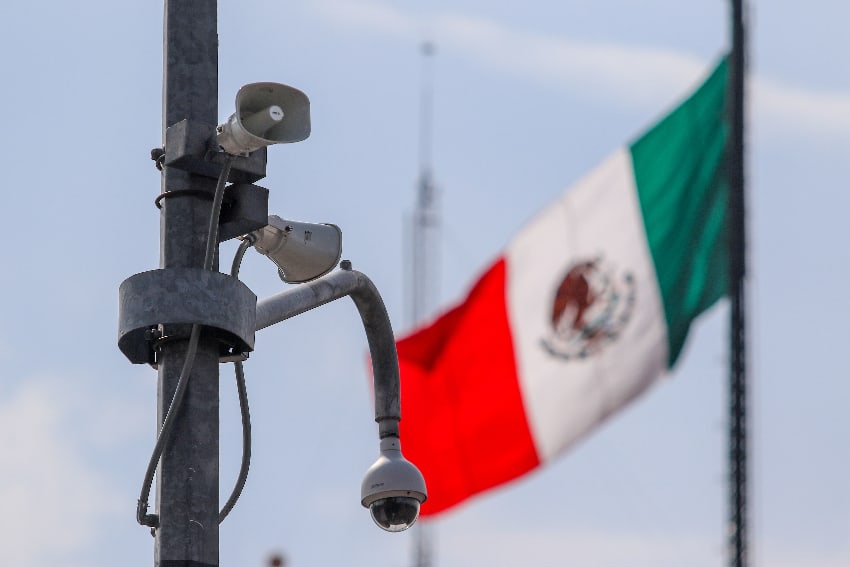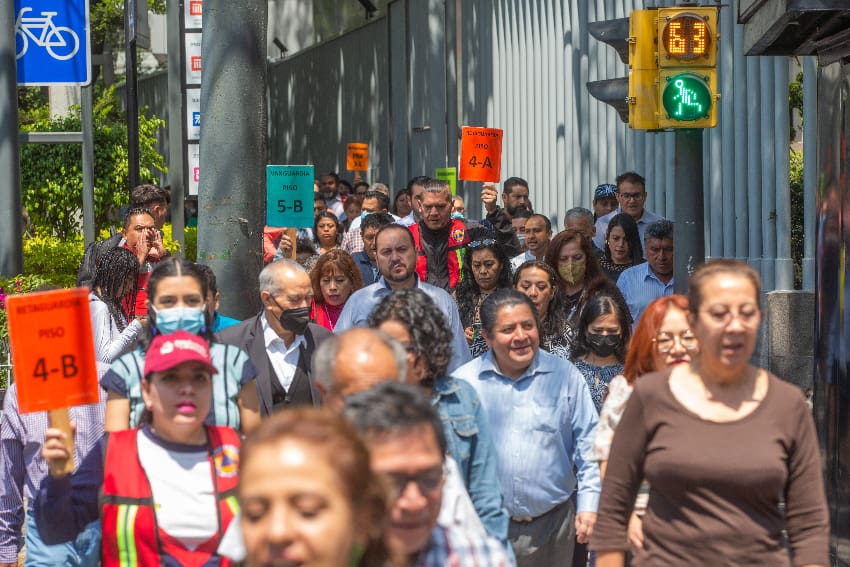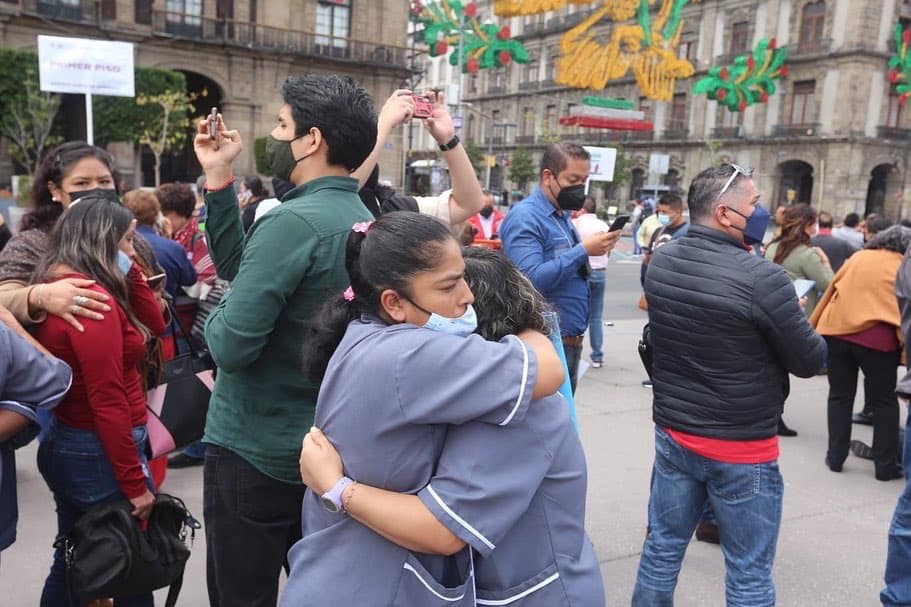What you need to know about the annual national drill

An earthquake (and hurricane) drill will be held in Mexico City and many other states this Tuesday, Sept. 19, the sixth anniversary of a powerful 7.1 magnitude temblor that shook central Mexico and the 38th anniversary of an 8.1 magnitude quake that devastated the capital.
Here’s what you need to know about the simulacro nacional, or national drill.
What time is the drill?
The drill will commence at 11 a.m.
If you’re in Mexico City, you’ll likely hear the distinctive sound of the earthquake alarm ringing out from one of almost 14,000 loudspeakers. The alarm will also emanate from loudspeakers in eight other states including México state, Guerrero and Puebla.
What are the drill hypotheses?
This year’s drill will assume one or more of four different hypothetical scenarios.
- A magnitude 8.0 earthquake with an epicenter in Acapulco, Guerrero (Scenario 1).
- A magnitude 7.8 earthquake with an epicenter in Bavispe, Sonora (Scenario 2).
- A Category 3 hurricane that makes landfall in the municipality of Othón P. Blanco, Quintana Roo (Scenario 3).
- A Category 4 hurricane that makes landfall in Los Cabos, Baja California Sur (Scenario 4).
What states are participating in the drill?
According to the Radio Fórmula news website, residents of Mexico City and the following states will participate in the drill based on one or more of the four scenarios.
- México state (scenario 1)
- Guerrero (1)
- Chiapas (1 and 3)
- Michoacán (1)
- Morelos (1)
- Oaxaca (1 and 3)
- Puebla (1 and 3)
- Tlaxcala (1)
- Chihuahua (Scenario 2)
- Sonora (2 and 4)
- Campeche (Scenario 3)
- Chiapas (1 and 3)
- Quintana Roo (3)
- Tabasco (3)
- Veracruz (3)
- Baja California (4)
- Baja California Sur (4)
What will happen during the drill?
People participating in the drill based on one of the earthquake scenarios will either evacuate or take other appropriate safety measures.
Authorities advise citizens to remain calm and not run, shout or push anyone during the drill – or if they find themselves experiencing a real earthquake or other natural disaster.

Workplaces and schools, among other places, have safety representatives who will lead Tuesday’s drill.
Municipal, state and federal authorities will use the drill to test their emergency response strategies and plans.
“Drills remind us that Mexico is a seismically active country and allow us to practice Civil Protection recommendations with regard to what to do before, during and after an earthquake,” according to the National Seismological Service.
How should I prepare for an earthquake?
The National Disaster Prevention Center (Cenapred) advises citizens to prepare a “family civil protection plan” for earthquakes, organize and participate in evacuation drills and “identify safe areas” in their homes, schools and workplaces.
Among other advice, it encourages citizens to prepare an “emergency backpack” with items such as a torch, first aid kit, two-way radio, water, non-perishable food, warm clothing, medications and photocopies of important documents.
During earthquakes, Cenapred advises citizens to remain calm and move away from objects, buildings, trees and electrical posts that could fall. Those who live near the ocean should move away from the coast due to the risk of tsunamis.
Why is the drill held on Sept. 19?
As mentioned in the introduction to this article, a powerful earthquake shook Mexico City on this date in 1985, claiming thousands of lives. Authorities subsequently decided to hold an earthquake drill on the same date to prepare for a similar event.

The Sept. 19, 2017 earthquake that claimed close to 400 lives in central Mexico occurred just a couple of hours after that year’s simulacro, while another major earthquake struck on the same date last year less than an hour after the drill was held.
Is it a coincidence that there have been three large earthquakes on the same date in the last 38 years?
Yes.
On this date last year, a Canada-based environmental seismologist described the occurrence of the latest Sept. 19 quake on the same day as previous temblors as an “astounding coincidence.”
“Today in astounding coincidences: Mexico had a nationwide earthquake safety drill today to mark the anniversary of the Sept 19, 2017 M 7.1 quake and the Sept 19, 1985 M 8.0 quake. An hour after the drill, a M 7.6 quake struck,” Celeste Labedz tweeted above a link to Mexico News Daily’s 2022 earthquake drill story.
“Note: ‘astounding’ in a human perspective doesn’t mean anything geophysically strange is up! Mexico is no stranger to large quakes (especially on the subduction zone), and the probability of date coincidences can be surprising, as in the Birthday Problem,” Labedz added, referring to probability theory.
For his part, National Autonomous University physicist José Luis Mateos, said that the probability of having three large-magnitude earthquakes on the same day was one in 133,225, or 0.00075%.
Mexico News Daily
Source: Mexico News Daily

